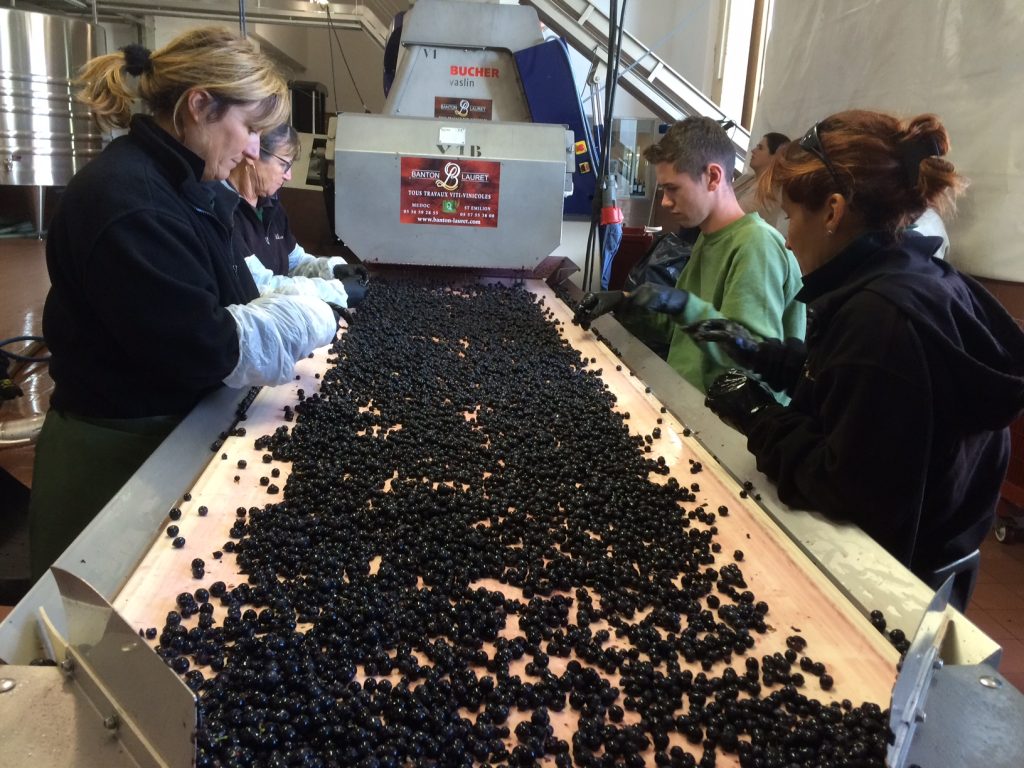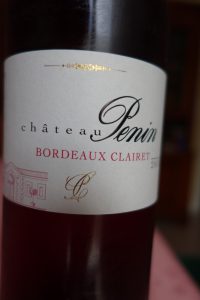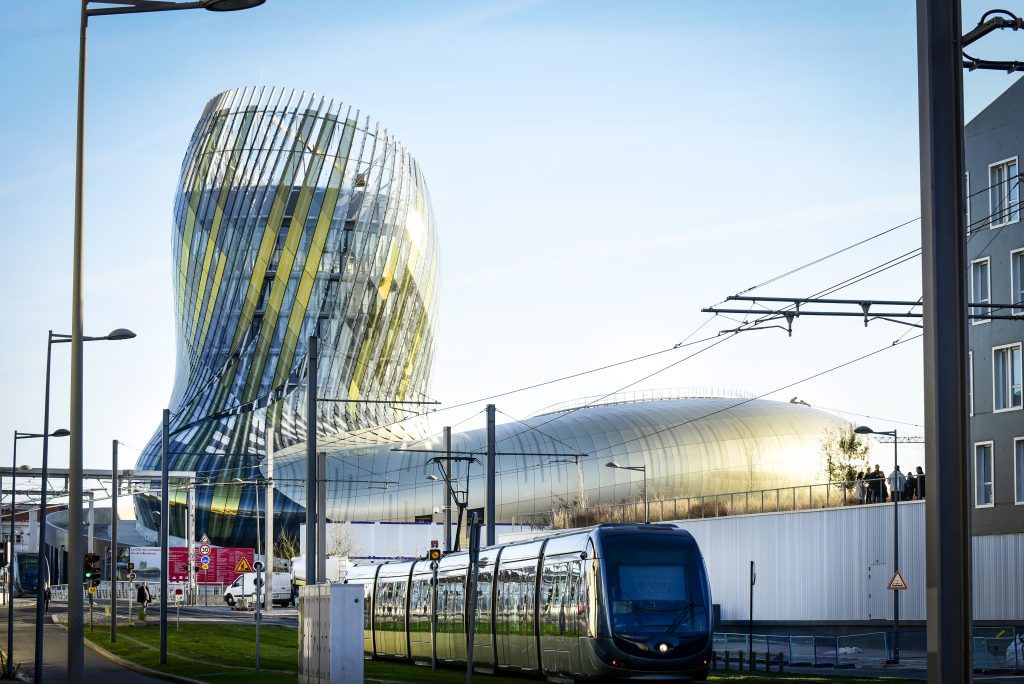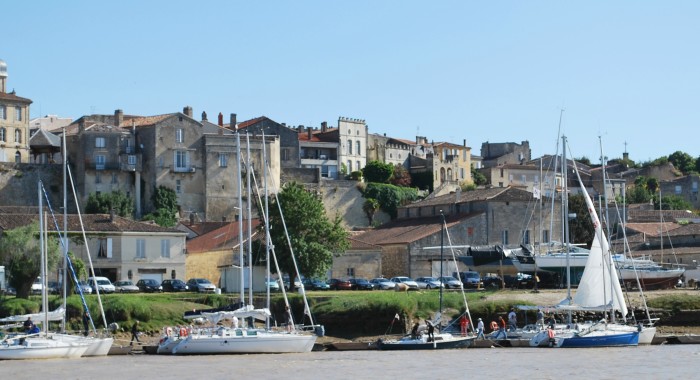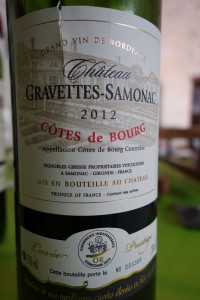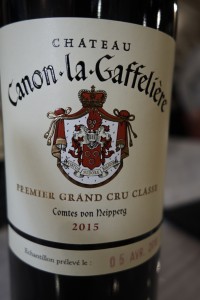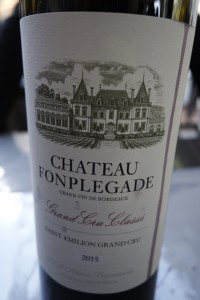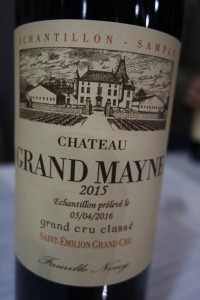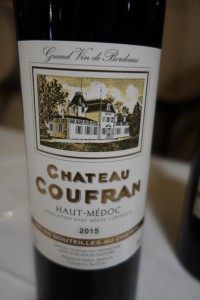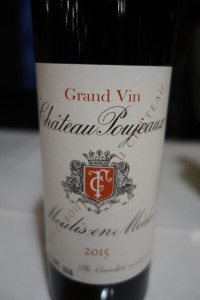SAINT EMILION
Balestard La Tonnelle
70% Merlot, 25% Cabernet Franc, and 10% Cabernet Sauvignon
N: deeper than the sister estate of Cap de Mourlin with blackberry liqueur aromas
P: spherical with more weight and length as well. Lively and mouth-filling. On the simple side but serious and good. Also one for early drinking.
Beauséjour Duffau-Lagarrosse
Merlot%, % Cabernet Franc, and % Cabernet Franc
N: fine dark fruit
P: better on palate. Sweet, round, and silky with fine tension reflecting its terroir. Long, dry, uncompromising finish. Beautiful minerality. Serious. This estate is making a serious comeback.
Cadet Bon
80% Merlot and 20% Cabernet Franc
N: simple and forthright – nothing special
P: better on the palate. Full and rich, but not overdone. Fresh, with high-quality tannin. Enjoyable.
Canon La Gaffelière
55% Merlot, 38% Cabernet France, and 7% Cabernet Sauvignon
N: very fruity and expressive with chocolate overtones
P: even better on the palate. Big and oaky, but with good fruit. Unfocused at this time, but promising.
Cap de Moulin
65% Merlot, 25% Cabernet Franc and 10% Cabernet Sauvignon
N: dusty and plummy, with blackberry jam overtones
P: very supple, almost too much at this early stage. Virtually oily texture. Short aftertaste. Not for long-term ageing.
Clos Fourtet
88% Merlot, 10% Cabernet Sauvignon and 2% Cabernet Franc
N: deep, inky, and slightly cosmetic. Already showing some secondary and tertiary complexity.
P: silky, melt-in-the-mouth texture, but with good acidity. Built to laste. Very good indeed.
La Couspaude
75% Merlot, 20% Cabernet Franc, and 5% Cabernet Sauvignon
N: spirity and ethereal, with tertiary aromas of candied fruit, but not exaggeratedly so
P: hint of greenness, but mostly rich and satisfying, despite a certain hotness on the aftertaste and a slightly top-heavy structure.
Dassault
75% Merlot, 20% Cabernet Franc, and 5% Cabernet Sauvignon
N: attractive, concentrated, sweet berry fruit (blueberry and blackberry)
P: fresh, fruit-juice-like flavor. Fine attack backed up by the structure of Cabernet. Rich, young, seductive, and reminiscent of a Pomerol in this vintage.
La Dominique
85% Merlot, 13% Cabernet France, and 2% Cabernet Sauvignon
N: soft, but closed. Few aromas, and these are rather one-dimensional.
P: much better on the palate. A little weak on the middle, but a nice transition from the softness of Merlot to the backbone of Cabernet. Medium weight and length. Everything in place. This estate is getting better.
Le Dôme
(exact percentage of grape varieties not indicated)
N: subdued and a little spirit
P: round, sensual, and with good bite. On a par with Valandraud, but perhaps with a touch more elegance and a better tannic texture. A great success. Reminiscent of a fine Pomerol.
Fonplégade
95% Merlot and 5% Cabernet Franc
N: fresh with attractive plum, cherry, and briar nuances
P: very full and rich with good bite. Good minerality, attractive texture, and good finish. Altogether classic.
La Gaffelière
70% Merlot and 30% Cabernet Franc
N: mostly closed, but with some encouraging subtle aromas
P: big, and develops well on the palate, which shows fine-grained tannin. Seems a little flabby at first, and then goes into a fine finish. Good, well-integrated oak and a very long aftertaste. Shows this estate’s return to quality.
Grand Mayne
75% Merlot, 20% Cabernet Franc, and 5% Cabernet Sauvignon
N: pure, simple, and sweet with toasty oak
P: round Merlot attack then shifts to good structure with textured tannin. Definite alcoholic hotness, but not as massive as some other vintages.
Guadet
80% Merlot and 20% Cabernet Franc
N: dark understated fruit, with some alcoholic heat
P: somewhat limp but, even so, better than past vintages. Hollow on the middle palate. Harsh bitterness on the aftertaste. Unbalanced.
Larmande
75% Merlot, 20% Cabernet Franc, and 5% Cabernet Sauvignon
N: cranberry, candied fruit, and a faint whiff of oxidation
P: soft, round, and sensual. Something Pomerol-like here. Tangy and mouth-puckering (in a good way). Enjoyable young.
Péby Faugères
(exact percentage of grape varieties not indicated)
N: big, sweet, with beeswax nuances
P: sensual mouthfeel. Melts in the mouth and goes into a lasting aftertaste. Modern in the best sense of the word. Tremendous fruit, but good balance as well. The medium-long aftertaste is a little dry. Watch out for that oak…
Rol Valentin
90% Merlot and 10% Cabernet Franc
N: not very expressive and slightly cosmetic
P: ripe, rich, and chewy with good structure. More acidity than most. A hybrid: half modern, half classic. Sweet crowd-pleasing sort of wine.
Soutard
As for grape varieties, the definitive final blend had not been decided upon.
N: very good fresh, pure blackberry aromas. Lovely ripe fruit.
P: big, rich, and juicy on the palate, but lacks depth and power. Not over-oaked.
La Tour Figeac
75% Merlot and 25% Cabernet Franc
N: discreet berry fruit and smoky notes. Understatedly attractive.
P: vivacious and luscious, tangy and refreshing. Will be very pleasurable for (relatively) early drinking.
Troplong Mondot
90% Merlot, 8% Cabernet Sauvignon, and 2% Cabernet Franc
N: rich and a little Portlike
P: tremendously rich on the palate. Bordeaux on steroids. Not to my taste. 15.5% alc./vol.
Valandraud
(exact percentage of grape varieties not indicated)
N: inky, with some camphor notes
G: great balance with fine structure and a long aftertaste. Worthy of its new classification. Very attractive red fruit (raspberry) finish.

Villemaurine
80% Merlot and 20% Cabernet Franc
N: nice, with some vinification aromas that will disappear with age
P: very nice overall impression, the best I’ve ever had from this estate. Lovely balance, tasty, tangy, and develops seamlessly. Elegant, satisfying, and with a long aftertaste. Good tannic texture. An excellent Saint Emilion.
POMEROL
Before sharing my notes, I would just like to say that this appellation was one of the great successes of the 2015 vintage in my opinion.
Also, I was very pleasantly surprised by the clear progress made by estates formerly considered “second tier”.
Beauregard
75% Merlot and 5% Cabernet Franc
N: interesting blend of blackberry, almond, and vanilla, along with a minor weedy component
P: My notes read: “slutty”. That outrageous shorthand indicates a wine that just overwhelms with its overt sensuality. This wine is all one would hope for in a Pomerol, and the epitome of successful Merlot. This is definitely a château worth watching (recently taken over by the Cathiards of Smith Haut Lafitte and the Moulin family of Galeries Lafayette).
Le Bon Pasteur
(exact percentage of grape varieties not indicated)
N: deep and a little dusty with fine violet nuances
P: rich, chewy, but with acidity to counterbalance the roundness. Big and juicy with finely textured tannin. Watch out for effect of oak though!
Clinet
75% Merlot and 5% Cabernet Franc
N: inviting, slightly smoky, and sexy
P: concentrated textbook Pomerol with rubbery tannin. Big, but elegant.
La Création
64% Merlot, 34% Cabernet Franc and 2% Cabernet Sauvignon
N: oaky and herbaceous. Off.
P: thick, rich, chocolaty with a sharp atftertaste. Short and just too oaky.
Note: I had never previously heard of this 4.5 hectare estate.
La Croix de Gay – PHOTO NOT SHOWN
97% Merlot and 3% Cabernet Franc
N: dusty with reticent fruit
P: big, but out of balance and somewhat hot. Ripe, round fruitiness. Will time even this out?
Fleur de Gay
N: biscuity, and both floral and fruity
P: really attractive. Soft, rich, sensual. Very typical of its appellation. A garden of earthly delights. Heavy mouth feel. The ultimate in Pomerol. Sensory overload. Long textured aftertaste.
Gazin
95% Merlot and 5% Cabernet Franc
N: more floral (iris) than fruity with some grassy overtones
P: huge and compact, resonating into a beautiful soft, textured aftertaste with delightful minerality. A winner. Gazin is shining these days.
Petit Village
71% Merlot, 20% Cabernet Franc and 9% Cabernet Sauvignon
N: vaporous and not very expressive at this stage
P: both svelte and rich. Luxurious with a killer aftertaste. Gummy finish with good minerality on the tail end. Excellent.
La Pointe
84% Merlot and 16% Cabernet Franc
N: concentrated blend of floral and fruit aromas
P: big, mouthfilling, and sensual, but also elegant. Rubbery empyreumatic quality typical of Pomerol. Rich and satisfying.

![20170217_165129_001[1]](http://www.bordeauxwineblog.com/wp-content/uploads/2017/02/20170217_165129_0011-e1487347617798-576x1024.jpg)
![images[8]](http://www.bordeauxwineblog.com/wp-content/uploads/2017/02/images8.jpg)









